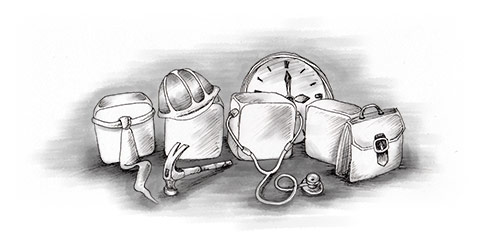Most Australian companies employ temporary or casual staff at some time (around 50 per cent on a regular basis), particularly in clerical positions when staff are sick or on holiday, for special projects and to supplement permanent employees.
The casual job market has grown considerably in recent years, particularly in the beverage, food and manufacturing sectors, and around 20 per cent of employees identify themselves as casual workers.
The temporary job market was hit hard during the recession in the early ’90s, although there has been a huge increase in demand in the last few years, particularly in the major cities. Downsizing and the cost of making full-time employees redundant (and unfair dismissal claims) have led many companies to employ an army of temporary employees, which is often more cheaper and more efficient.
Casual workers are usually employed on a daily, first-come-first-served basis. The work often entails hard labouring and is therefore better suited to men, although if you’re a female weightlifter there’s no bar against the fairer sex. Pay for casual work is usually low (from $5 per hour) and is usually paid cash in hand, although this is illegal.
Working Holidaymakers
Temporary work particularly applies to foreigners with working holidaymaker visas, which permit you to work for any employer for up to three months. It isn’t easy to find temporary or casual work in many areas and you often need to hustle to get a job and may require experience or qualifications. It’s important to ensure that you have sufficient funds to tide you over until you can find work. The easiest work to find is on farms, usually picking fruit or vegetables (see below). You should be prepared to splash out on some smart clothes if a job requires them (or arrange to have them sent to you from overseas).
During university holiday periods, there's stiff competition from students so, if you’re planning to work in a major city, try to get there before the local students break for their holidays. Most holiday jobs are available in fast food, harvesting, hospitality and retailing. Recruiting is often done a few months before holiday periods, e.g. companies hire in August to October for the summer period of December to February.
Well known department and chain stores are generally the best employers. Avoid jobs offering unpaid ‘trial’ periods, which is illegal and is usually simply a con trick to get you to work for nothing. You should also avoid door-to-door selling requiring advance payment (e.g. $200) for sample kits (selling them is how some companies make their money) and jobs which pay only commission.
Visitors to Australia with working holiday visas may be interested in the Visitoz Scheme, which is a work placement scheme designed particularly with working holiday visa holders in mind. Those who are accepted by the selection process for the scheme are guaranteed jobs and on-the-spot training during their stay in Australia.
Jobs offered are mainly outdoors in the agricultural or rural hospitality industries, although there are jobs available in education, healthcare and maintenance. For more information contact the Visitoz Scheme: in Australia, Springbrook Farm, Goomeri 4601, Queensland (Tel. 07-4168 6106, www.visitoz.org ); in the UK, Grange Cottage, 6 Shipton Road, Ascott-under-Wychwood, Oxfordshire OX7 6AY (Tel. 01993-831 972).
Good sources of information for working holidaymakers are Live, Work & Play in Australia by Sharyn McCullum (Kangaroo Press), Workabout Australia by Barry Brebner, and the TNT Australia & New Zealand Travel Planner, which contains advice on finding casual and temporary work. The British Universities North America Club (BUNAC), 16 Bowling Green Lane, London EC1R 0QH, UK (Tel. 020-7251 3472, www.bunac.org ) has a ‘Work Australia’ programme which helps graduates with working holidaymaker visas to find temporary work.
Farm Work
One of the most common forms of temporary work in Australia is fruit and vegetable picking, which can be done somewhere in Australia throughout the year (many people manage to stay in work all year).
Pay varies considerably (from excellent to poor) and is either an hourly rate or, more often, piece work, where the more you pick the more you earn. Doing piece work you can earn around $100 per day, although you need to work between 50 and 80 hours per week, possibly seven days a week. You should expect to earn from around $300 per week after tax from most harvesting jobs. Always establish your conditions, hours and pay in advance, as there are unscrupulous employers around who will happily take advantage of you given half a chance.
Farming is a rough and ready experience and involves hard, often dirty work – definitely not for softies. You must usually have a tent or vehicle to sleep in; some employers provide basic accommodation and food (there may be a charge), but it’s usually terrible and it’s better to provide your own. It pays to have your own transport, as farms are generally situated in remote areas. Large farms are sometimes targeted by immigration officials, resulting in deportation for illegal workers.
The government publication Harvest Table carries job advertisements from local fruit-growers’ associations and there are harvest labour offices in many country areas. There’s also a Harvest Hotline with the latest information (local call rate 1300-720 126). An up-to-date state by state harvest guide is included on the Harvest Trail link on the Jobsearch website (www. jobsearch.gov.au ).

